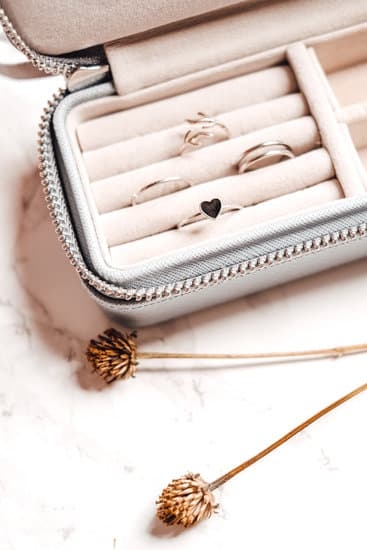Taking care of jewelry is essential to ensure its longevity and to keep it looking as beautiful as the day you first bought it. From daily maintenance tips to understanding different care techniques for various materials, this article will provide you with a comprehensive guide on how to properly care for your jewelry.
Jewelry holds not only monetary value but also sentimental meaning, making it even more important to take proper care of these precious pieces. Whether it’s a family heirloom passed down through generations or a special gift from a loved one, proper maintenance will help preserve the beauty and significance of your jewelry for years to come.
In this article, we will explore different care techniques for specific materials such as gold, silver, platinum, and more. Each material requires specific care methods to prevent damage and maintain its shine. We will also delve into daily maintenance tips that can easily be incorporated into your routine to keep your jewelry sparkling at all times.
Furthermore, proper storage solutions play a crucial role in protecting your valuable pieces from scratches, tarnish, and other potential damages. We will discuss the best methods for storing jewelry in order to maintain its condition and prevent any loss or damage.
Join us as we dive into step-by-step cleaning techniques that are safe for different types of jewelry. From pearls and diamonds to delicate gemstones, we will provide you with detailed instructions on how to clean each type effectively without causing any harm.
Lastly, we’ll tackle traveling with jewelry and offer dos and don’ts to ensure its safety during transport. We’ll also discuss when seeking professional maintenance is necessary and why it’s vital for the longevity of your jewelry.
By following these preventative measures and taking the time to properly care for your jewelry, you can enjoy their beauty for many years while preserving their value both sentimentally and financially.
Understanding Jewelry Materials
Jewelry is made from a variety of materials, each requiring different care techniques to ensure its longevity and beauty. Understanding how to properly care for jewelry based on its materials is essential in order to prevent damage and maintain its value. Here are some key tips for caring for different types of jewelry:
- Gold: Gold jewelry is durable and resistant to tarnish, but it can still accumulate dirt and oils over time. To clean gold jewelry, mix a few drops of mild dish soap with warm water and gently scrub the piece using a soft-bristle brush. Rinse thoroughly and dry with a soft cloth. Avoid using abrasive cleaners or brushes that could scratch the surface.
- Silver: Silver jewelry tends to tarnish over time due to exposure to air and moisture. To remove tarnish, use a silver polishing cloth or silver cleaner specifically designed for jewelry. Gently rub the piece until the tarnish is removed, then rinse with water and dry thoroughly.
- Platinum: Platinum jewelry is highly resistant to damage and does not tarnish easily. Cleaning platinum involves soaking it in a solution of warm water and mild dish soap, then gently scrubbing with a soft brush. Rinse thoroughly and wipe dry with a clean cloth.
- Diamonds: Diamonds are one of the hardest gemstones, but they can still become dirty or lose their sparkle due to oils or lotions on the skin. To clean diamond jewelry, fill a bowl with warm water and mild dish soap, then soak the pieces for about 20-30 minutes.
Use a soft brush to gently scrub away any dirt or debris, paying close attention to the settings where dirt tends to collect. Rinse thoroughly under running water and pat dry with a soft cloth. - Pearls: Pearls are delicate gemstones that require special care as they can be easily scratched or damaged by chemicals found in many cleaning products. To clean pearls, use a soft, damp cloth to gently wipe away dirt and oils. Avoid using any harsh chemicals or soaking the pearls in water.
By understanding and implementing these care techniques for different materials, you can ensure that your jewelry remains in the best condition possible. Regular maintenance and proper care will help preserve their beauty and value for years to come.
Daily Maintenance Tips
Taking care of your jewelry doesn’t have to be a difficult or time-consuming task. By implementing some simple daily maintenance habits, you can ensure that your jewelry always looks its best and stays sparkling for years to come.
One of the easiest ways to keep your jewelry looking its best is to clean it regularly. This can be done with a soft, lint-free cloth and some mild soapy water. Gently wipe down each piece, paying special attention to any crevices or intricate designs. Rinse the jewelry with clean water and pat it dry using a soft cloth. Avoid using harsh chemicals or abrasive materials, as they can damage the metal or stones.
In addition to regular cleaning, another important daily maintenance tip is to avoid exposing your jewelry to harsh chemicals or substances that could cause damage. This includes things like perfumes, lotions, hair products, and household cleaning agents. These substances can tarnish metals, corrode gemstones, and leave a residue on the surface of your jewelry. When applying such products, make sure they are fully absorbed before putting on any jewelry.
To further prevent damage during daily wear, it’s also a good idea to remove your jewelry before engaging in certain activities. This includes activities such as swimming (chlorine can damage metals), exercising (sweat can tarnish metals), gardening (dirt and chemicals can scratch or stain), and cooking (heat and oil can degrade certain gemstones). By taking these precautions and following these simple daily habits, you will be able to keep your jewelry sparkling for longer periods of time.
| Daily Maintenance Tips | Description |
|---|---|
| Cleaning | Regularly clean your jewelry with a soft cloth and mild soapy water to remove dirt and grime. |
| Avoid Harsh Chemicals | Avoid exposing your jewelry to perfumes, lotions, hair products, and household cleaning agents, as they can damage the metal or stones. |
| Remove During Certain Activities | Take off your jewelry before swimming, exercising, gardening, and cooking to prevent damage from chlorine, sweat, dirt, and heat/oil respectively. |
Storage Solutions
Choosing the right storage solution
When it comes to storing your valuable jewelry, it is important to choose the right storage solution to ensure their safety and longevity. The type of storage solution you use will depend on the size, shape, and material of your jewelry pieces. Here are some options to consider:
- Jewelry Boxes: Jewelry boxes are a classic choice for storing jewelry. Look for one with individual compartments or dividers to prevent different pieces from scratching against each other. Additionally, choose a box with a soft lining that will protect delicate gemstones and metals.
- Jewelry Trays or Inserts: For those with a larger collection, jewelry trays or inserts can be a practical option. These can easily fit into drawers or cabinets, keeping your pieces organized and protected.
- Hanging Jewelry Organizers: If you have limited space or prefer your jewelry to be visible and easily accessible, hanging organizers are a great choice. These organizers often feature hooks or loops where you can hang necklaces and bracelets separately.
- Zippered Pouches or Rolls: When traveling or if you want to keep your jewelry in a secure place, zippered pouches or rolls are an excellent option. These provide individual compartments for each piece while also preventing tangling and damage during transport.
Maintaining the storage environment
In addition to choosing the right storage solution, it is crucial to create and maintain an appropriate environment for your jewelry pieces. Here’s what you need to do:
- Avoid Direct Sunlight: Excessive exposure to sunlight can cause gemstones and metals to fade and become damaged over time. Store your jewelry in a cool, dark area away from direct sunlight.
- Control Humidity Levels: High humidity levels can tarnish metals and damage certain gemstones like opals and pearls. Consider using desiccant packets or humidity control products in your storage area to keep the humidity at a safe level.
- Prevent Exposure to Chemicals: Chemicals found in household cleaners, perfumes, and even some lotions can cause damage to your jewelry. Make sure to store your pieces away from any potential exposure to these chemicals.
- Regularly Inspect Your Storage Space: Just like jewelry requires inspection and maintenance, so does your storage space. Regularly check for any signs of moisture, insects, or wear and tear in your storage area, ensuring that it remains a safe environment for your precious pieces.
By choosing the right storage solution and maintaining an appropriate environment, you can protect your valuable jewelry from damage and ensure their beauty and quality last for years to come.
Cleaning Techniques
Keeping your jewelry clean is essential to maintain its shine and beauty. Regular cleaning can help remove dirt, oils, and other substances that can dull the appearance of your pieces. Here are some step-by-step instructions for cleaning different types of jewelry:
Cleaning Silver Jewelry
Silver jewelry is prone to tarnishing over time, but with proper cleaning techniques, you can keep it looking bright and lustrous. Start by mixing a few drops of mild dish soap with warm water in a bowl. Place your silver jewelry in the soapy water and gently scrub it with a soft-bristle toothbrush or a cloth.
Make sure to pay extra attention to any crevices or intricate designs. Rinse the pieces thoroughly under running water and pat them dry with a clean, soft cloth.
If your silver jewelry has severe tarnish, you can use a silver polishing cloth or silver polish solution specifically designed for tarnish removal. Follow the instructions on the packaging carefully and avoid using excessive force, as this may cause damage to delicate pieces.
Cleaning Gold Jewelry
Gold jewelry can accumulate oils from skin contact and lose its shine over time. To clean gold jewelry, start by preparing a mixture of mild dish soap and warm water in a bowl. Dip a soft cloth or brush into the soapy water and gently scrub the gold piece’s surface. Pay attention to any dirt or buildup in hard-to-reach areas.
Afterward, rinse the jewelry under running water while rubbing it gently with your fingers to ensure all soap residue is removed. Pat it dry with a clean, lint-free cloth or let it air dry before wearing or storing.
Cleaning Gemstone Jewelry
Gemstone jewelry requires special care as some gemstones are delicate and may be damaged by certain cleaning methods. To clean gemstone jewelry, start by wiping the piece with a soft, damp cloth to remove any surface dirt or oils. Avoid using any harsh chemicals or abrasive materials that may scratch or damage the stones.
If your gemstone jewelry needs a more thorough cleaning, you can create a solution of lukewarm water and mild dish soap in a bowl. Soak the jewelry in the soapy water for a few minutes and then use a soft brush, like an old toothbrush, to gently scrub away any remaining dirt. Rinse the jewelry under running water and carefully pat it dry with a clean cloth.
Remember that certain gemstones, such as pearls or opals, are extremely delicate and require specialized care. Always refer to specific instructions provided by the jeweler or seek professional cleaning advice for these types of gemstones.
By following these step-by-step instructions for cleaning different types of jewelry, you can ensure that your precious pieces remain beautiful and sparkling for years to come. Remember to always handle your jewelry gently and store it properly when not in use to further protect it from damage or loss.
Special Care for Gemstones
Gemstone jewelry is cherished for its vibrant colors and stunning beauty. Whether you have a precious diamond ring or a delicate emerald pendant, it is important to understand the special care that gemstone jewelry requires to preserve its brilliance and longevity.
Avoid Exposure to Harsh Chemicals
Certain chemicals can damage gemstones by dulling their shine or causing them to become discolored. To protect your gemstone jewelry, it is essential to avoid contact with harsh chemicals such as chlorine, bleach, and household cleaners. These substances can erode the finish on your gemstones and even cause irreversible damage. When cleaning your home or swimming in a pool, always remove your gemstone jewelry beforehand.
Be Mindful of Heat and Light
Excessive heat and prolonged exposure to sunlight can also harm gemstones. Some gems are vulnerable to color fading or heat sensitivity. For instance, opals are prone to cracking due to excessive heat exposure, while amethysts may lose their vibrant purple hue under direct sunlight for an extended period of time. To prevent damage, store your gemstone jewelry in a cool and dry place away from direct sunlight when not being worn.
Handle with Care
Gemstones can be relatively fragile and prone to scratches or chips if mishandled or knocked against hard surfaces. To prevent accidental damage while wearing or storing your gemstone jewelry, it is best to handle it with care. Remove any gemstone rings or bracelets before engaging in activities that involve rough handling or impact, such as sports or heavy lifting.
By following these top tips for preserving the beauty of your gemstone jewelry, you can ensure that each piece continues to shine brightly for years to come. Remember that proper care and maintenance are key in safeguarding the value and longevity of your beloved gemstone pieces.
Professional Maintenance
When it comes to caring for your jewelry, there may come a time when you need professional maintenance. While daily maintenance and cleaning can help keep your jewelry looking its best, there are certain situations where seeking professional cleaning and repairs is necessary. Knowing when to seek professional maintenance and why it is important can help you preserve the value and longevity of your precious pieces.
Professional cleaning is recommended for certain types of jewelry, such as gold or platinum pieces with intricate designs or gemstones that cannot be easily cleaned at home. Jewelers have specialized equipment and expertise to thoroughly clean your jewelry without causing any damage. They use gentle techniques that can remove built-up dirt, oils, and tarnish, restoring the shine and brilliance of your pieces.
In addition to regular cleaning, professional repairs may also be necessary for damaged or broken jewelry. It’s always a good idea to consult with a professional jeweler if you notice loose settings, missing stones, or any other signs of damage. They have the skills and knowledge to properly repair your jewelry using high-quality materials. By addressing these issues promptly, you can prevent further damage or loss of your precious pieces.
While seeking professional cleaning and repairs is important for maintaining the quality of your jewelry, it’s equally vital to choose a reputable jeweler. Look for jewelers who are certified by recognized organizations and have positive reviews from previous customers. By entrusting your jewelry to a skilled professional, you can have peace of mind knowing that it will be handled with care.
| Statistic | Data |
|---|---|
| Percentage of jewelers who recommend annual professional cleaning | 85% |
| Average cost of professional repairs | $100-$500 |
| Number of skilled jewelers certified by GIA | Over 20,000 |
Traveling with Jewelry
When traveling with jewelry, it is important to take extra precautions to ensure its safety. Whether you are going on a vacation or attending a special event, following certain dos and don’ts can help protect your valuable pieces from being lost, damaged, or stolen. Here are some tips to keep your jewelry safe while traveling.
One of the most important dos when traveling with jewelry is to always keep it with you. Avoid putting your valuable pieces in checked baggage or leaving them unattended in hotel rooms. Instead, pack your jewelry in a small travel case and keep it in your carry-on bag or purse. This way, you can keep an eye on it at all times and reduce the risk of theft or loss.
Another essential do is to store each piece of jewelry separately to prevent scratching and tangling. Use individual pouches or zip-top bags for each item and place them in a dedicated compartment of your travel case. You can also consider using a jewelry roll or organizer that has separate compartments for different pieces. By keeping your jewelry organized and protected, you can easily locate what you need without any damage.
On the other hand, there are some important don’ts to remember when traveling with jewelry. First, avoid wearing excessive amounts of jewelry when going through airport security checks. Metal detectors may react to multiple layers or large pieces of metal, causing unnecessary delays and searches by security personnel. To avoid this hassle, wear minimal jewelry during the security screening process.
Additionally, resist the temptation to remove your jewelry while in public places such as airports or restaurants. Taking off your rings, bracelets, or necklaces increases the chances of forgetting them behind or losing them accidentally. Although it might seem more comfortable without your accessories on during long flights or meals, it’s best to leave them on and keep an eye on them instead.
By following these dos and don’ts while traveling with jewelry, you can enjoy peace of mind knowing that your valuable pieces are safe. Taking these simple precautions can help prevent damage or loss, allowing you to fully enjoy your travels without any worries about your jewelry’s safety.
Preventative Measures
Being proactive in preventing damage and loss of your jewelry is essential for maintaining its value and longevity. By following a few simple strategies, you can significantly reduce the risk of accidents and keep your precious pieces safe. Here are some preventative measures to consider:
Firstly, always remove your jewelry before engaging in any physical activities or household chores. This will minimize the chances of accidental impact, scratching, or exposure to harsh chemicals that can damage the metal or gemstones. Activities such as exercising, gardening, and cleaning can be particularly harmful to delicate jewelry pieces.
Secondly, it is advisable to avoid wearing your jewelry while swimming or bathing. Chlorine in swimming pools and saltwater can corrode metals and dull the appearance of gemstones over time. Additionally, soaps and shampoo residues may create a film on the surface of the jewelry, diminishing its luster.
Furthermore, it is crucial to be mindful of how you store your jewelry when not wearing it. Avoid tossing all your pieces together in one box or drawer as they can easily tangle or scratch each other. Instead, use separate compartments or soft pouches for different types of jewelry to prevent them from getting damaged.
Additionally, consider investing in a home safe or safety deposit box at your bank to store valuable jewelry items that you do not wear frequently. These secure storage options provide protection against theft and reduce the likelihood of damaging or losing your precious pieces.
Lastly, always ensure that you have adequate insurance coverage for your valuable jewelry. In case of accidental loss, theft, or damage beyond repair, having appropriate insurance will offer financial protection and peace of mind.
By implementing these preventative measures into your daily routine and lifestyle choices, you can greatly minimize the risks associated with owning and wearing fine jewelry. Taking these precautions will help preserve the beauty and value of your cherished pieces for years to come.
Conclusion
In conclusion, it is clear that proper care and maintenance of jewelry is essential in order to preserve its beauty and longevity. By understanding the materials used in your jewelry, you can apply the appropriate care techniques to ensure its optimal condition. Daily habits such as removing jewelry before showering or swimming, and avoiding exposure to harsh chemicals or extreme temperatures, can significantly reduce the risk of damage.
Additionally, storing your jewelry properly is crucial for its protection. Whether using individual compartments in a jewelry box or investing in a specialized storage solution like a jewelry travel case, proper storage will prevent scratches, tangling, and other forms of damage. Regular cleaning is also important in order to remove dirt, oils, and buildup that can dull the shine of your jewelry.
While taking care of your own jewelry is essential, there may be times when professional maintenance is necessary. Cleanings performed by a jeweler can restore the luster of your pieces and address any repairs that need to be made. Likewise, if you plan on traveling with your jewelry, it is important to follow specific dos and don’ts to ensure its safety.
Ultimately, caring for your jewelry not only ensures its lasting beauty but also protects your investment. By following the recommended preventative measures and incorporating good habits into your daily routine, you can enjoy wearing your favorite pieces for years to come. Remember: a little extra effort goes a long way in maintaining the value and allure of your precious jewelry.
Frequently Asked Questions
What’s the best way to take care of my jewelry?
The best way to take care of your jewelry is by following a few simple steps. First and foremost, it’s important to store your jewelry properly. Keep your pieces separate from each other to prevent scratches and tangles, using jewelry boxes or pouches with individual compartments.
Additionally, avoid exposing your jewelry to extreme temperatures or sunlight, as this can cause damage. When putting on perfume, hairspray, or any other beauty products, make sure these have dried before wearing your jewelry to prevent any chemical reactions that may tarnish the metal or gemstones. Lastly, regularly clean your jewelry using non-abrasive solutions and a soft cloth to help maintain its shine.
How do you take care of jewelry at home?
Taking care of your jewelry at home involves some basic practices that can go a long way in preserving its beauty and longevity. Begin by inspecting your jewelry periodically to identify any loose stones or signs of wear. If you notice anything amiss, it’s advisable to take it to a professional jeweler for repair rather than attempting fixes at home which may cause further damage.
On a day-to-day basis, avoid wearing your jewelry during activities such as exercising or doing housework that may expose it to unnecessary strain or chemicals. After each use, gently wipe down your pieces with a soft cloth to remove any oils or residue that might have accumulated.
Does water ruin jewelry?
While water itself does not typically ruin most types of jewelry, prolonged exposure or certain water conditions can be damaging. Water alone usually doesn’t harm metals like gold, silver, platinum, stainless steel, or titanium; however, chlorine in pools and saltwater can adversely affect them over time due to their corrosive properties. Similarly, certain gemstones may be sensitive to moisture and absorbing water could negatively impact their appearance or structure if they are more porous in nature like opals or pearls.
It is recommended that you remove these types of jewelry before swimming, showering, washing dishes and thoroughly dry them afterwards. Taking care to protect your jewelry from unnecessary water exposure will help maintain its condition and prolong its lifespan.

Welcome to my jewelry blog! My name is Sarah and I am the owner of this blog.
I love making jewelry and sharing my creations with others.
So whether you’re someone who loves wearing jewelry yourself or simply enjoys learning about it, be sure to check out my blog for insightful posts on everything related to this exciting topic!





